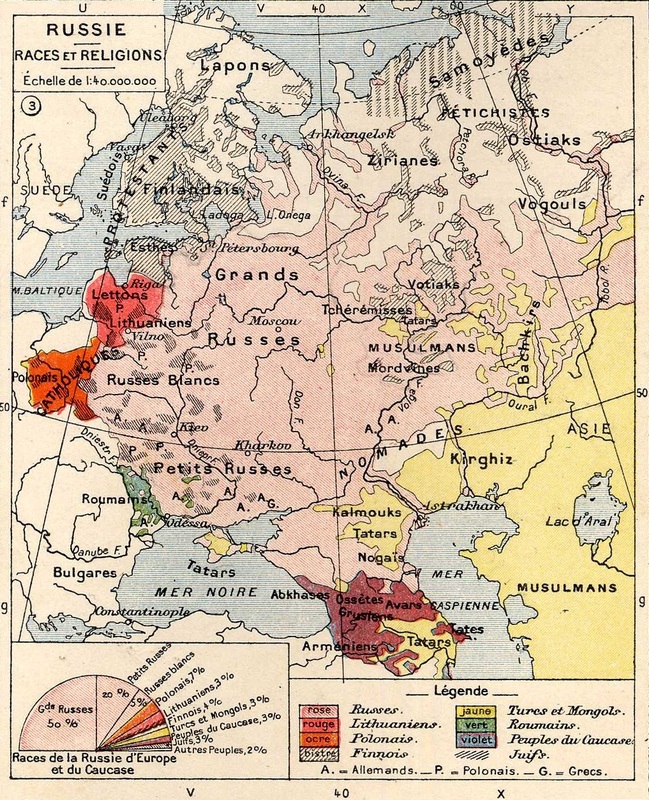The German settlements were primarily comprised of ethnic Germans or German language speakers who migrated from western Europe from the modern states of Germany, Denmark, France, Austria, Belgium, and Sweden.
Upon arrival in Russia from 1764 to 1767, the colonists were placed in ethnic villages according to their religious beliefs. The primary languages spoken in the colonies were the German dialects brought from their homelands.
Although the colonies were almost exclusively comprised of these new immigrants to Russia, there were many ethnic groups living in the same region including the Russians, Malorussy (the term "Little Russians" was applied to Ukrainians), Chuvash, Bashkirs, Kalmyk, Kyrgyz, Mordvins, and Tatars. Many of these nomadic groups lived in the region long before the arrival of the Russian military in the 1500s and the German settlers in the 1760s.
By the eve of World War I, Russia was strikingly diverse with only half of its population comprised of ethnic Russians.

Beratz, Gottieb. The German colonies on the Lower Volga, their origin and early development: a memorial for the 150th anniversary of the arrival of the first German settlers on the Volga, 29 June 1764. Translated by Adam Giesinger. Lincoln, NE: American Historical Society of Germans from Russia, 1991.
Dietz, Jacob E. History of the Volga German Colonists. Lincoln, NE: American Historical Society of Germans from Russia, 2005.
Koch, Fred C. The Volga Germans: In Russia and the Americas, from 1763 to the Present. University Park, PA: Pennsylvania State University Press, 1977.
Koch, Fred C. The Volga Germans: In Russia and the Americas, from 1763 to the Present. University Park: Pennsylvania State UP, 1977. Print.